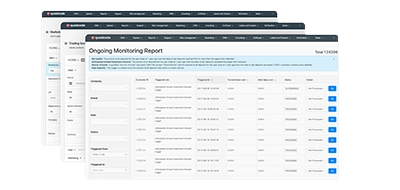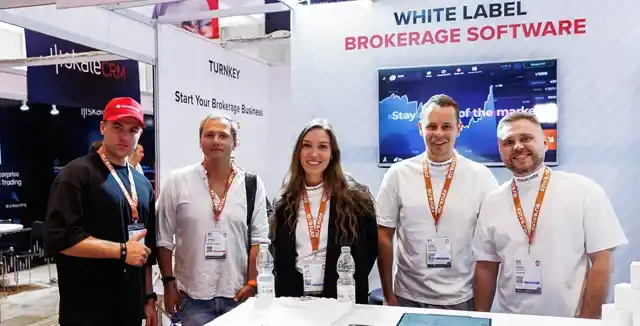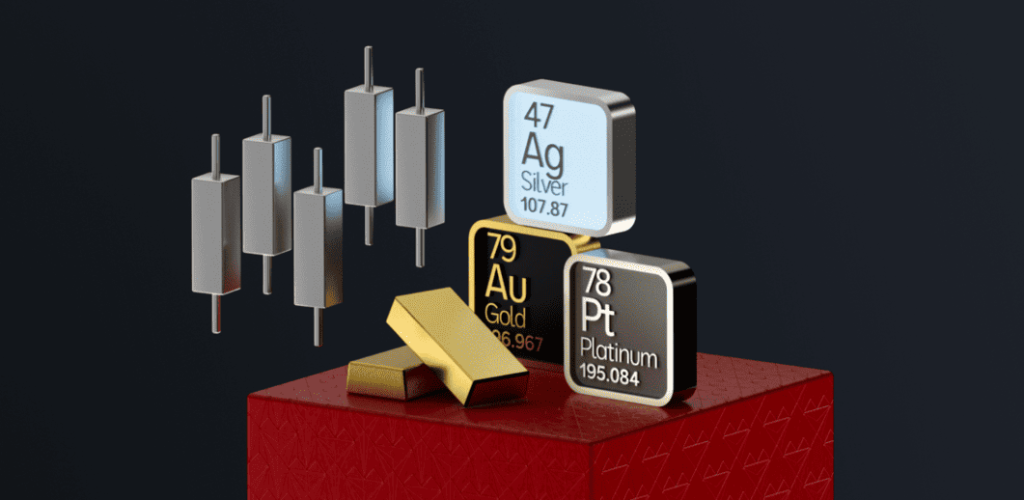Volver
Contents
¿Qué es una orden Fill or Kill (FOK)? Definición, ejemplos y cómo funciona


Iva Kalatozishvili
Business Development Manager

Demetris Makrides
Senior Business Development Manager
Una orden de ejecución o cancelación (FOK) es un tipo de orden condicional que puede colocar con su corredor al operar con valores como acciones. Con una orden FOK, la operación completa debe ejecutarse inmediatamente según las especificaciones que usted describió, como precio y cantidad, o la orden se cancela automáticamente. Esto garantiza que la operación se ejecute completamente según lo deseado o que no se realice ninguna operación.
Definición de una orden de llenado o eliminación
Una orden de ejecución o liquidación (FOK) proporciona a los operadores un conjunto estricto de condiciones predefinidas que deben cumplirse en su totalidad para que una operación se complete. Con una orden FOK, se definen con precisión los detalles de la operación por adelantado, incluyendo el activo de intercambio deseado, la cantidad a negociar y el precio máximo aceptable.
Este tipo de orden busca ejecutarse inmediatamente por completo, de acuerdo con la estructura de operación propuesta, o no se realiza ninguna transacción. La característica que define una FOK es su mandato de ejecución total. Si el mercado no puede ejecutar instantáneamente toda la cantidad de la orden simultáneamente, al precio límite establecido o a un precio superior, la operación se cancela o se cancela en lugar de ejecutarse parcialmente.
No se ofrece flexibilidad para completar la transacción solo parcialmente: se ejecuta sin problemas según los filtros predefinidos o se retracta rápidamente. Esta condición diferenciada distingue a las órdenes FOK de otros tipos de órdenes que pueden ejecutarse parcialmente antes de dejar abiertas las porciones no coincidentes en el libro de órdenes.
Al especificar la construcción ideal de la operación con antelación y exigir el cumplimiento de estos filtros para su cierre, las operaciones de compraventa directa (FOK) ayudan a los operadores a adoptar un enfoque disciplinado y definido. La certeza de un cumplimiento máximo inmediato o una cancelación rápida proporciona claridad ante la ausencia de cierres parciales que puedan comprometer una posición prevista.
Cómo funciona una orden de relleno o eliminación
Al preparar una orden FOK, definirá las especificaciones de la operación directamente con su bróker. Esto incluye la designación del activo de intercambio, la fijación del precio máximo mediante un límite y la determinación de la cantidad exacta que se ejecutará.
Con los datos en mano, su bróker transmitirá inmediatamente el FOK electrónicamente a la bolsa correspondiente. Aquí, la información de la orden se expone a la liquidez del mercado en tiempo real presente en la base de datos del libro de órdenes. Los ordenadores de la bolsa trabajan diligentemente para buscar contraórdenes o grupos de órdenes coincidentes que cumplan las condiciones predefinidas.
Si las cantidades exactas solicitadas pueden cumplirse instantáneamente al precio límite o a un precio superior, la operación se completará sin problemas en tiempo real. Sin embargo, si no es posible cumplir las especificaciones instantáneamente debido a la falta de liquidez en la cartera de órdenes, la programación FOK cancela automáticamente toda la transacción propuesta.
A diferencia de los tipos de órdenes alternativas, como las órdenes de día o las válidas hasta su cancelación, que persisten indefinidamente hasta su finalización o retractación manual, las órdenes FOK cuentan con protocolos de vencimiento que cancelan las órdenes no ejecutadas en segundos. Esto restablece la propuesta de operación y evita que la orden permanezca con exposiciones de liquidez incompletas.
Considere implementar un FOK hipotético para comprar 50,000 acciones con un límite de $10. Al recibir esta orden, su corredor la transmitirá instantáneamente a las bolsas. Si hubiera 35,000 acciones disponibles a $10 o menos, la diferencia cancelaría la operación completa en lugar de resultar en una ejecución parcial. Esta ejecución rigurosa garantiza que sus necesidades predefinidas se satisfagan total o parcialmente.
Condiciones variables como fluctuaciones de precios o brechas de liquidez inesperadas también pueden provocar la cancelación debido a la incapacidad de cumplir con precisión las especificaciones. El vencimiento acelerado garantiza la resolución del resultado, evitando riesgos indefinidos inherentes a órdenes pendientes de ejecución.
You may also like
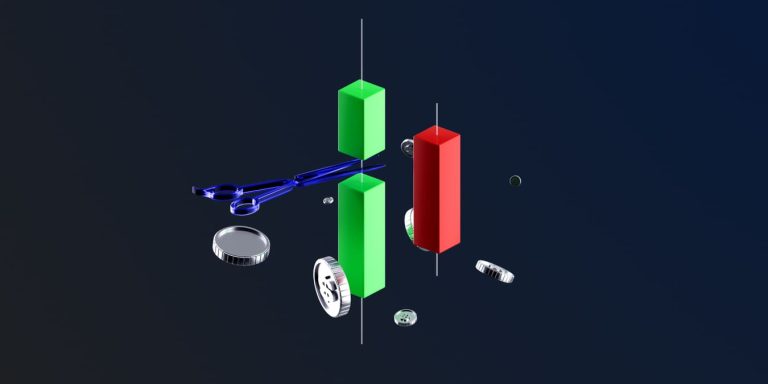
¿Cuánto tiempo dura una orden de relleno o de eliminación?
Al utilizar la naturaleza estrictamente condicional de una orden FOK, es importante comprender su efímera duración en los mercados. A diferencia de las órdenes alternativas, que pueden persistir en las bolsas durante periodos prolongados, las FOK tienen vencimientos programados, diseñados meticulosamente para adaptarse a la velocidad de las operaciones actuales.
Debido a la necesidad de confirmación instantánea de filtros predefinidos al exponer una orden, la mayoría de las bolsas limitan el tiempo que una orden FOK entrante puede permanecer sin procesar antes de activarse la cancelación automática. Si bien los plazos pueden variar ligeramente entre plataformas y en función de los activos, las órdenes suelen cancelarse en segundos si la liquidez correspondiente no se materializa de inmediato.
Esta minúscula vida útil se alinea estratégicamente con las condiciones imperantes en los mercados líquidos contemporáneos. Con las mejoras tecnológicas que redistribuyen rápidamente el flujo de órdenes globalmente a velocidades de fracciones de segundo, los retrasos breves pueden generar variaciones de precio suficientes para alterar los parámetros de negociación precalibrados. La elegibilidad fugaz del FOK no completado preserva la estructura prevista por los operadores ante posibles resultados divergentes.
En comparación, las variedades de órdenes alternativas, como las órdenes diarias o las instrucciones válidas hasta su cancelación, pueden persistir en los libros por tiempo indefinido, manteniendo la exposición hasta el cierre mediante operaciones de conciliación o cancelación discrecional. Si bien prolonga las oportunidades de participación, también surgen riesgos por la falta de límites temporales impuestos a las órdenes no ejecutadas expuestas a las fluctuaciones fluidas del mercado.
En entornos con abundante liquidez y una distribución fluida, las duraciones efímeras de FOK resultan beneficiosas. Los estrictos requisitos de cumplimiento, junto con breves plazos de elegibilidad, garantizan resultados resueltos mediante el llenado instantáneo o la cancelación inmediata. Los llenados parciales se omiten mediante disciplinas de ejecución rígidas de "todo o nada".
Naturalmente, una menor longevidad reduce la probabilidad de coincidencia de órdenes emergentes en relación con las instrucciones persistentes. Sin embargo, para las estrategias que dependen de la sensibilidad temporal y de criterios predefinidos, la certeza inmediata prevalece sobre las posibles oportunidades a largo plazo a medida que las condiciones evolucionan. Los FOK fugaces fomentan la claridad propia de los mercados dinámicos modernos.
Diferencia entre órdenes FOK e IOC
Al realizar una operación inmediata, deberá determinar qué orden condicional se ajusta a sus necesidades específicas: una ejecución inmediata o cancelación (FOK) o una inmediata o cancelación (IOC). Si bien ambas exigen una ejecución acelerada al entrar, su gestión divergente de la liquidez incompleta presenta diversas ventajas y desventajas que deben analizarse cuidadosamente.
Un IOC intentará ejecutar su orden en su totalidad de inmediato al precio límite especificado. Sin embargo, si no se logra una conciliación completa, se completará cualquier parte alcanzable, mientras que el resto se cancelará de los libros de órdenes abiertos sin riesgo residual. Por el contrario, una orden FOK no conciliada resultará en la cancelación de la totalidad de la transacción propuesta como una sola unidad.
Considere la posibilidad de comprar 25 000 acciones con un límite de 15 $, aplicando ambas condiciones secuencialmente. Una empresa de inversión en acciones (IOC) podría obtener 10 000 acciones inmediatamente, mientras que las 15 000 restantes se cancelarían por falta de liquidez. En el mismo escenario, una FOK invalidaría la solicitud completa de 25 000 acciones si no se cumplen las restricciones iniciales.
Naturalmente, el Comité Olímpico Internacional (COI) es indulgente con los rellenos incompletos, mientras que un Comité de Operaciones de Financiamiento (FOK) supervisa la aplicación rigurosa del cumplimiento total o la terminación completa. Esta distinción es fundamental en función de las prioridades entre la rapidez de finalización y la preservación de la precisión de las dimensiones de las posiciones mediante la garantía de la finalización.
Cuando la puntualidad prevalece sobre los beneficios de ejecuciones incluso parciales, como en las estrategias de alta frecuencia, el FOK ofrece una resolución instantánea y confiable. Por el contrario, el IOC resulta más tolerante con los scalpers oportunistas cuando la rotación rápida supera la preservación de los filtros de asignación preestablecidos. Una cuidadosa consideración de sus objetivos específicos y las condiciones del mercado determinará la herramienta condicional óptima.
You may also like

Ejemplo de uso de una orden de relleno o eliminación
Como operador profesional, busca con frecuencia puntos de entrada oportunos para posiciones importantes en diversas acciones con alta liquidez. Una mañana, sus algoritmos detectan un posible movimiento alcista en desarrollo en la empresa tecnológica MegaTech, Inc., basado en el fortalecimiento de las señales de flujo de órdenes y la disminución de la oferta por encima del soporte clave de 50 $ por acción.
Dada la gran posición de 100,000 acciones que requiere su estrategia y la velocidad prevista de reacción del mercado, usted opta por colocar una orden límite FOK inmediata para asegurar completamente su posición en una prueba de $50. Al acceder a su plataforma de corretaje, coloca la solicitud "GTD FOK BUY 100,000 acciones de MegaTech a $50" y la envía a las bolsas mediante conexiones de baja latencia.
El mercado no duda, ya que las órdenes de venta se barren y MegaTech rebota $0,25 por encima de su nivel de activación. Sin embargo, la liquidez disponible es escasa por encima del soporte y solo puede satisfacer 80.000 acciones de su orden en este momento. Aquí, la naturaleza implacable del condicionamiento FOK se hace evidente: al no poder cumplir completamente el criterio de 100.000 acciones en la prueba inicial, su orden se cancela de inmediato sin ejecución parcial.
Si hubiera seleccionado un IOC, se habrían obtenido 80.000 acciones y el resto se habría anulado. Si bien captura una parte, esto le deja por debajo de la escala prevista. Al exigir un cumplimiento estricto, inmediato o total, el FOK protege su estrategia de comprometer el tamaño de la posición prevista debido a coincidencias iniciales incompletas en mercados dinámicos. En escenarios que aprovechan un tamaño masivo, este nivel de certeza en la ejecución resulta invaluable.
¿Cuándo debo utilizar una orden de relleno o de eliminación?
En determinadas condiciones de mercado, utilizar una orden de ejecución inmediata (FOK) puede ofrecer claras ventajas sobre otros tipos de órdenes. A continuación, se presentan algunos escenarios en los que una FOK puede ser especialmente adecuada:
- Resolución inmediataCuando la velocidad de ejecución es primordial, un FOK garantiza el cierre inmediato del pedido tras su envío, ya sea por cumplimiento o cancelación. Esto ofrece una seguridad inmediata en comparación con otros pedidos que podrían quedar sin ejecutar.
- Dimensionamiento preciso de la posiciónPara operaciones que requieren un número exacto de acciones o contratos, un FOK garantiza que se realizará el volumen especificado o no se realizará ninguna transacción. Esto evita operaciones incompletas que podrían afectar el tamaño de las operaciones previstas.
- Mercados de ritmo rápidoEn listados propensos a fluctuaciones rápidas de precios, la liquidación instantánea de una orden FOK evita la exposición a desviaciones de los términos de la orden antes del cierre. Las ejecuciones parciales ponen en riesgo el resto.
- Estrategias complejasLos sistemas de trading que exigen datos precisos pueden preferir la claridad de una orden FOK completada o cancelada a la ambigüedad de órdenes parcialmente completadas. Esto facilita un seguimiento preciso del proceso.
- Priorizar el cierreCiertas técnicas, como el day trading, priorizan la rapidez en la conclusión de órdenes, en lugar de maximizar el porcentaje de ejecución de cada operación. Las FOK se adaptan perfectamente a este objetivo.
- Evitando la incertidumbreEn lugar de soportar las incertidumbres de las órdenes no terminadas, un FOK resuelve la colocación inmediatamente, excluyendo el riesgo de bloquear operaciones y alterar posiciones.
Cuando las condiciones exigen resultados bien definidos y con riesgo limitado mediante ejecuciones instantáneas completas o cancelaciones rápidas, la lógica de "fill-or-kill" puede optimizar eficazmente las operaciones de trading. Su propósito claro está en consonancia con las mejores prácticas específicas.
Cómo realizar una orden de relleno o cancelación
Introducir una orden FOK es sencillo una vez que se comprenden los parámetros clave y el proceso de colocación con el bróker. Analicemos los pasos básicos:
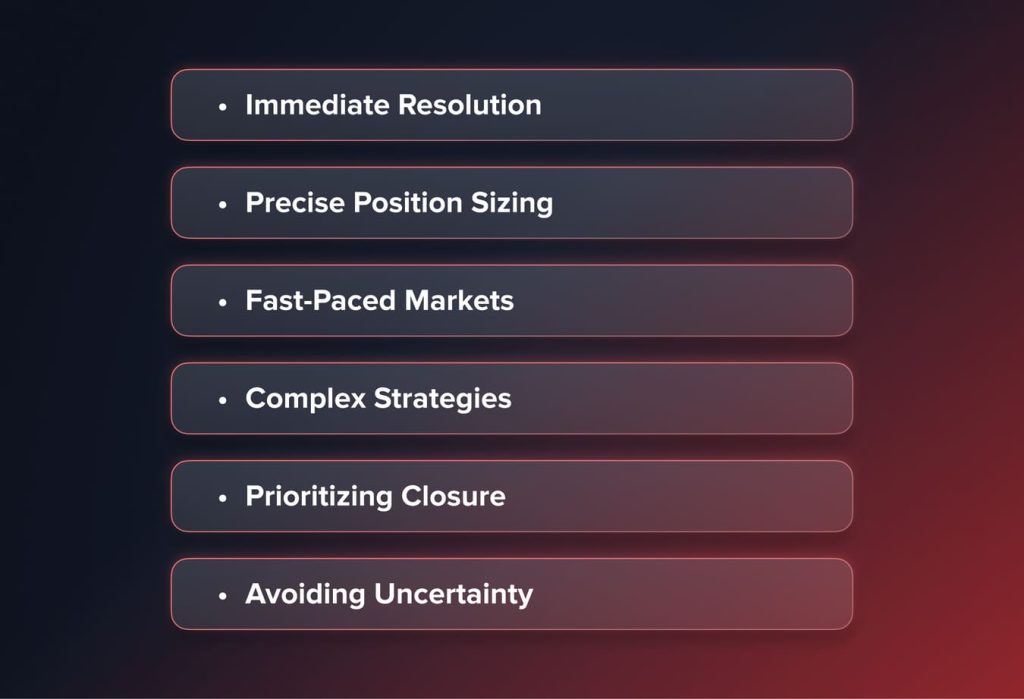
1. Selección de un corredor
Antes de empezar, evalúe qué corredores se adaptan a sus mercados y tipos de órdenes preferidos. Las plataformas de escritorio, web y móviles pueden agilizar la entrada de órdenes.
2. Iniciación del ticket comercial
Inicie sesión en la interfaz de trading del bróker elegido a través del sitio web o la aplicación dedicada. Busque la opción "Nueva orden" y seleccione la plataforma deseada.
3. Completar los detalles comerciales
Complete campos como símbolo, lado (Comprar/Vender), cantidad de la orden, tipo de precio (Límite), precio límite y tipo de orden (Completar o Cancelar). Revise cada elemento cuidadosamente.
4. Selección del tipo de pedido
En los menús interactivos o desplegables, seleccione "Rellenar o eliminar" o un texto similar para especificar su intención de ejecución total o cancelación inmediata.
5. Revisión de los parámetros del pedido
Verifique que todos los detalles coincidan con su plan de operaciones previsto, incluido el comportamiento condicional, antes de confirmar. Realice las modificaciones necesarias.
6. Presentación para su efecto
Envíe el pedido a los centros de mercado designados haciendo clic en el botón "Confirmar" o similar. Verifique los detalles del envío.
7. Comprensión de los riesgos temporales
Tenga en cuenta que los intercambios pueden eliminar los FOK no completados en cuestión de segundos, así que utilice solo activos líquidos a menos que no esté dispuesto a asumir riesgos.
8. Métodos de ejecución alternativos
Algunos corredores permiten realizar órdenes FOK por teléfono si se prefiere la colocación digital. Asegúrese de que el representante comprenda la lógica condicional.
Al conocer las particularidades del proceso de colocación con el intermediario elegido, podrá aprovechar estratégicamente la claridad y la precisión de los resultados que ofrece la función "fill or kill" para obtener resultados óptimos. No dude en confirmar su comprensión completa.
Conclusión
En los mercados digitales de alta velocidad actuales, las órdenes condicionales como FOK ofrecen a los operadores sofisticados herramientas potentes para definir operaciones con precisión y granularidad. Al comprender su mecánica y sus usos adecuados, podrá aprovechar al máximo las oportunidades que se presenten en múltiples horizontes temporales.
Utilizadas estratégicamente, las órdenes de ejecución o cancelación le garantizan asegurar las posiciones previstas al instante según filtros predefinidos o retirarse sin problemas de posibles operaciones que no se puedan ejecutar de inmediato. Para escenarios de trading que priorizan la transparencia absoluta y el estricto cumplimiento de los criterios de volumen o precio, la lógica FOK constituye una valiosa opción táctica.
Actualizado:
19 de diciembre de 2024
